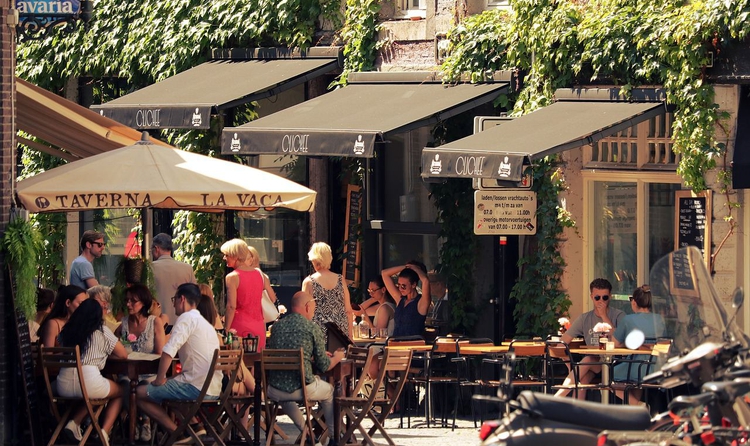The 15-minute city is not a plan to ban people from leaving their neighbourhoods

“No rule can limit ambulatory freedom in a situation of peace”, indicate the experts consulted by Verificat

In the past few weeks numerous videos, photos and podcasts have been making the rounds on social media claiming that 15-minute cities – an urban planning concept starting to be implemented in cities like Paris, Bogotá or Barcelona that is aimed primarily at promoting a lifestyle in which a person’s everyday needs are reachable by a 15-minute walk or bike ride – are trying to ban people from entering or leaving their neighbourhoods in order to segregate their inhabitants.
But the idea that this planning concept is a way of controlling people’s lives or restricting people’s freedom is FALSE. The 15-minute city does not intend to impose any sort of physical barrier or stop people from moving beyond a 15-minute walk or bike ride of their place of residence.
The creator of this concept, urban planner Carlos Moreno, explains to Verificat that the aim of the proposal is to reduce unnecessary trips and make it so that city inhabitants have access to basic services, recreational areas and their place of work within a 15-minute radius – by foot or bicycle – of their home.
What’s more, from a constitutional perspective, “the potential restriction of any fundamental right such as the freedom of residence or movement means that no government, no matter what political party is in charge, can prohibit citizens from leaving or entering any area, place or region of the national territory”, Ignacio Álvarez Rodríguez, professor of Constitutional Law at the Complutense University of Madrid (UCM), tells Verificat.
“The 15-minute city basically consists in just trapping people in [their neighbourhoods]”
Cities are major contributors to climate change. As a result, lawmakers and urban planners have for some time been rethinking the current model, establishing new types of mobility that place a strong focus on public transit and walking.
The 15-minute city, promoted by urban planner Carlos Moreno, is related to this idea. This proposal does not specifically say that traffic must be reduced or the passage of vehicles restricted. Rather, it proposes, by providing certain services in every neighbourhood – medical centres, schools, parks, etc. – within a walking/cycling distance of fifteen minutes for all inhabitants, it reduces the necessity of using a means of transport to reach those places.
Even though Moreno introduced his project idea in 2016, it has only recently attained certain relevance among political decision-makers who wish to implement this theoretical approach in their cities. Its recent appearance in public debate has led to misinterpretations and misleading messages issued by far-right politicians and media sources claiming that the concept is actually a plan to control people’s lives or restrict people’s freedom of movement.
However, the legal structures that would make these supposed restrictions possible are not easy to implement because there is no legal framework that allows limitations on people’s freedom of movement. Álvarez Rodríguez uses the example of the pandemic lockdowns, which affected people’s “fundamental rights”: the rights were “not only restricted”, but “they were de facto suspended”, which is why the lockdowns “were declared unconstitutional by Spain’s Constitutional Court”.
We must remember that changing urban traffic is an initiative consistent with the recommendations of the Intergovernmental Panel on Climate Change (IPCC), the leading scientific body in the assessment of climate change, which, in its report published for lawmakers in 2018, highlighted that limiting global warming to 1.5 degrees Celsius “would require rapid and far-reaching transitions in energy, land, urban and infrastructure (including transport and buildings), and industrial systems”.